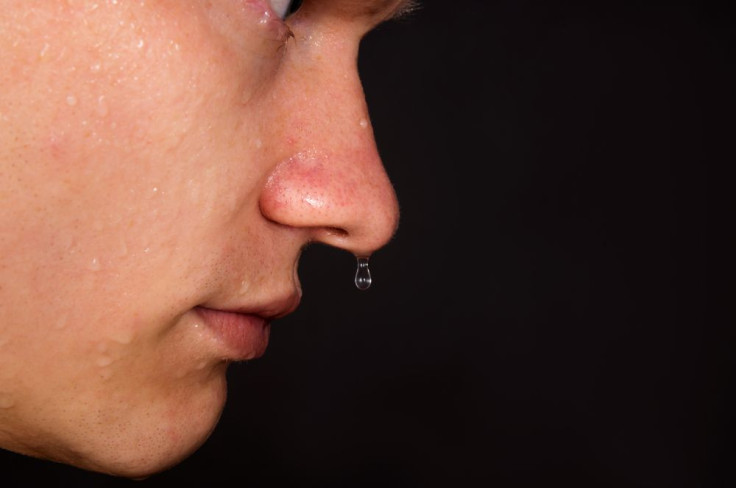Measuring Your Sweat, A Health Monitor And Diagnostic Device Is The Future Of Wearable Technology

Sweat, the cooling system of your body, is made almost completely of water, with tiny amounts of other chemicals, including ammonia, urea, salts, and sugar. Remarkably, these chemicals along with the small molecules and peptides they contain can reveal what is going on inside your body. For this reason, scientists are trying to harness sweat through some form of wearable technology and turn it into a new way to measure and monitor your immediate health. “Sweat contains a trove of medical information and can provide it in almost real time,” wrote Dr. Jason Heikenfeld, associate professor of electronic and computing systems, University of Cincinnati, in an article for IEEE Spectrum.
Since, well, nearly forever doctors have been extracting fluids from our bodies in order to evaluate some aspect of our health. How many blood tests, urine tests, or saliva tests have you undergone in your life? For some time now, researchers have been exploring ideas and technologies that might continuously monitor a given biomarker and so open a window on the status of our overall health, in the manner, say, of a diabetic who daily tests her blood sugar levels. Because of its non-invasive (and therefore painless) possibilities, Heikenfeld and his co-researchers began to focus their efforts on using sweat as fuel.
Specifically, Heikenfeld envisions a wearable gadget that stimulates and collects sweat via a patch about the size of a band-aid, and then analyzes it using your smartphone. “Sweat is a vastly untapped biofluid for human performance monitoring,” said Heikenfeld’s collaborator, Dr. Joshua Hagen of the Air Force Research Laboratory, which funds the research.
What would this technology offer? According to Heikenfeld and Hagen, the new gadget would help us map the effects of our lifestyle choices on our immediate health while revealing, possibly, the unseen onset of cancer. The device could monitor heat stress in firefighters and fatigue in first responders. Taking a new prescription drug? Whether during a clinical study or after approval, the gadget could determine our response time and possible side effects in patients. With a complementary tool, paramedics might understand a patient’s condition in short order and then perform as necessary… or quickly diagnose a concussion in a backyard football player.
The value from the perspective of the Air Force is also clear. After investing millions in a fighter jet, a technology to monitor and improve the alertness and cognitive function of its pilot is the natural next step. In particular, the Air Force is hoping the device will be able to accurately measure cytokine biomarkers, as a determination of a pilot’s stress level, and to measure neuropeptide biomarkers, such as Orexin-A, to understand alertness levels and general brain states.
While there’s a good deal of work ahead, Heikenfeld’s lab is refining a patch that includes secure Bluetooth communication, data storage, and a small microcontroller to help conduct signals from the electronic sensors on the patch. In the meantime, a simple physical-exertion sensor patch, created for athletes and measuring only electrolyte imbalances causing dehydration, could appear on the market as early as 2015.
Published by Medicaldaily.com



























